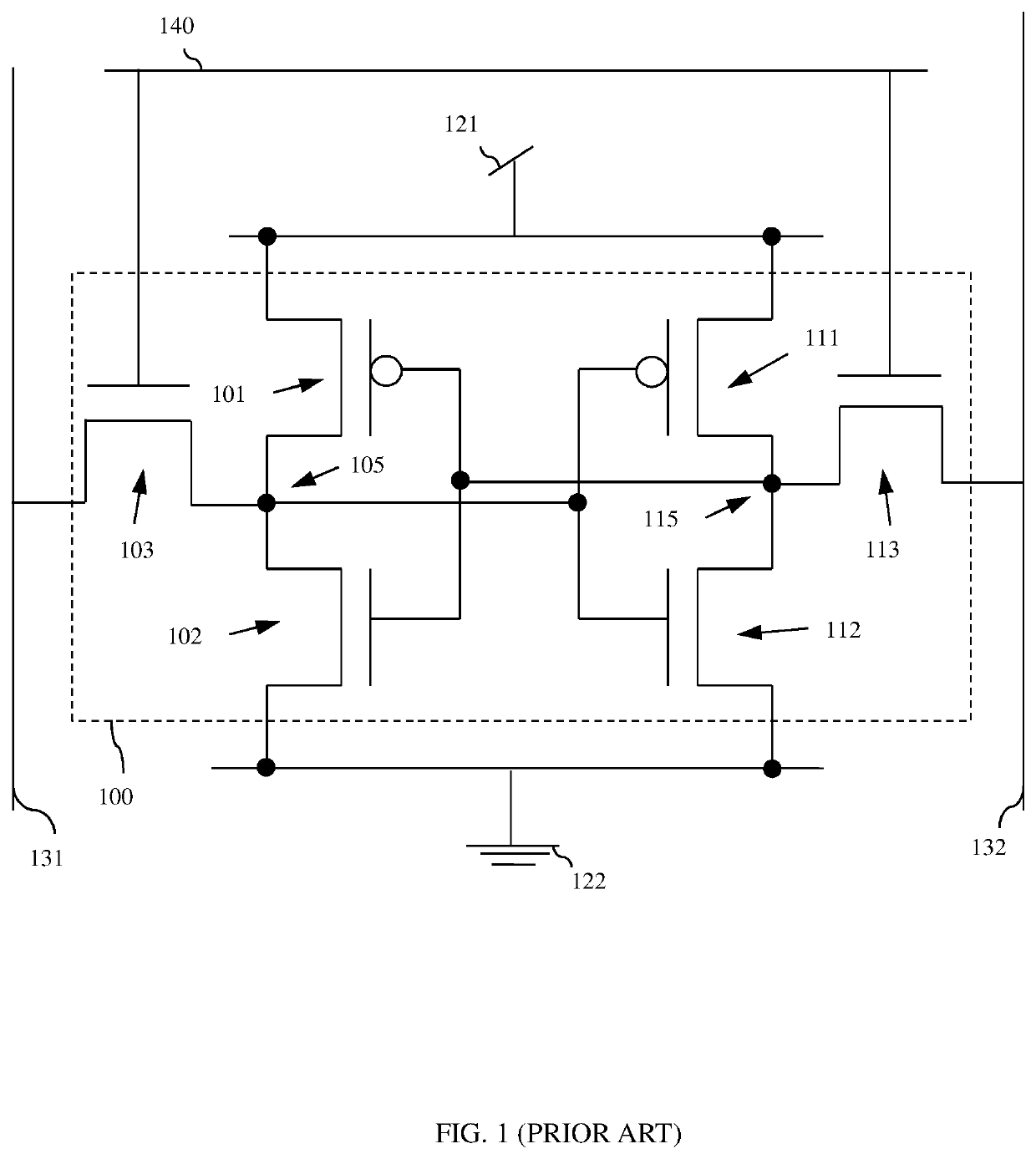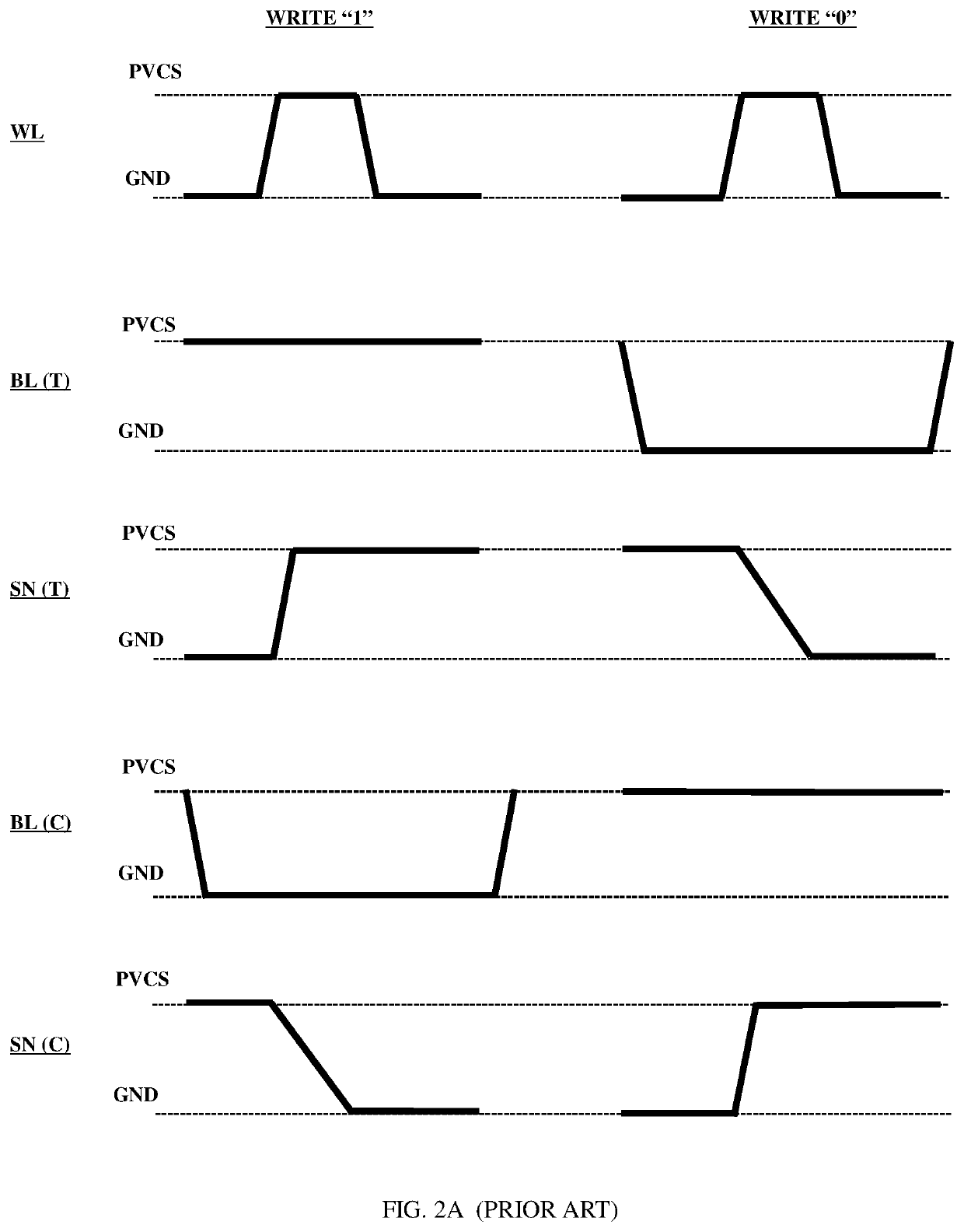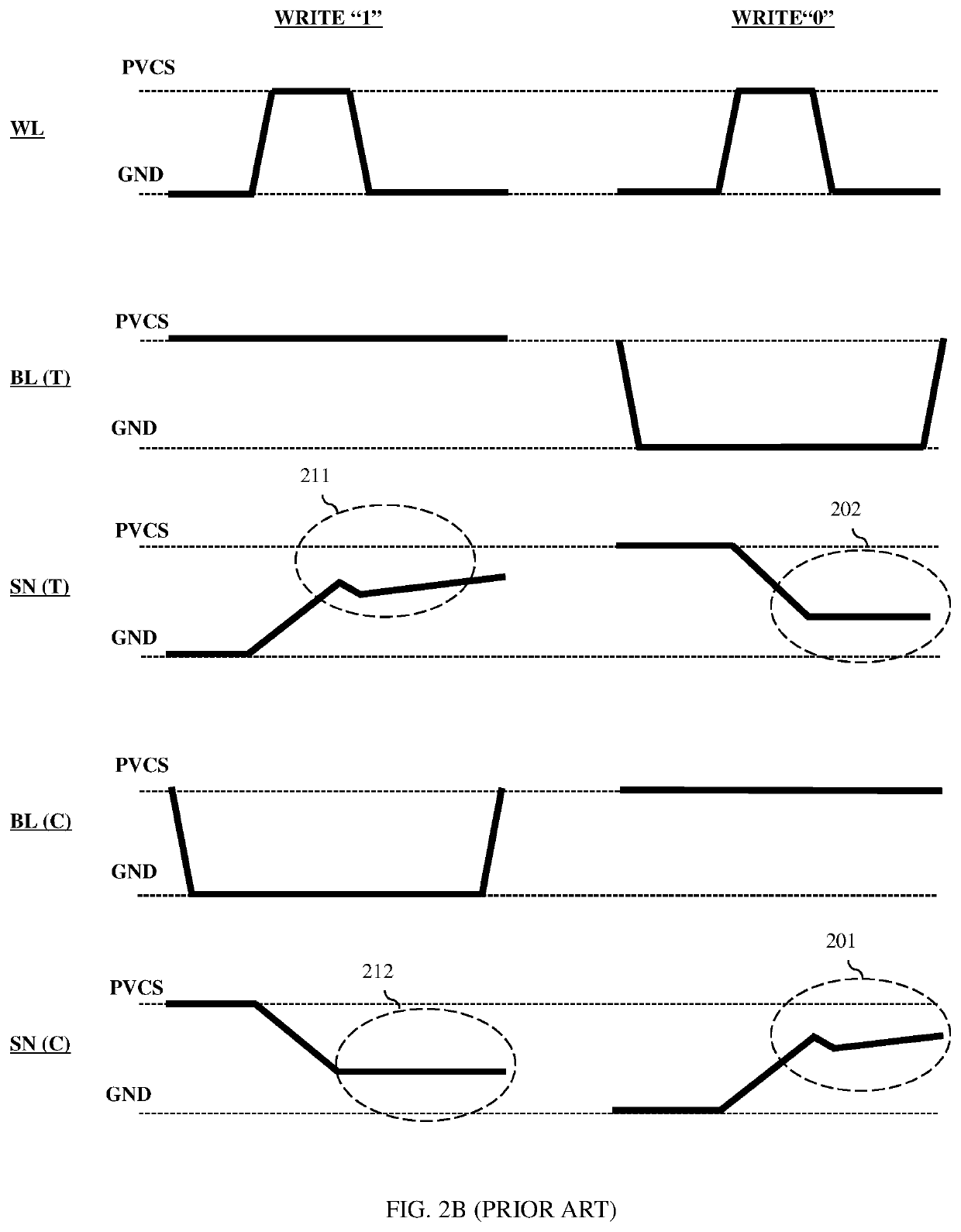Column-dependent positive voltage boost for memory cell supply voltage
- Summary
- Abstract
- Description
- Claims
- Application Information
AI Technical Summary
Benefits of technology
Problems solved by technology
Method used
Image
Examples
Embodiment Construction
[0026]As mentioned above, for a static random access memory (SRAM) cell 100, such as that shown in FIG. 1, the combination of size scaling (e.g., using single semiconductor fin pull-up transistors), positive cell supply voltage (PVCS) lowering and process variations (e.g., threshold voltage variations at the process corners) can result in some pull-up transistors 101, 111 across the memory array with insufficient headroom to ensure that a data value is stored properly on the storage node during the write operation. Specifically, when writing a “1” data value to the storage node true 105, the bitline true 131 remains charged to the PVCS level and the bitline complement 132 is discharged to ground 122. When the wordline is activated, the voltage level on the storage node true 105 increases. To ensure that the data value of “1” is stored on the storage node true 105, the voltage on this storage node true 105 needs to rise to the PVCS level and remain there. However, if the second pull-...
PUM
 Login to View More
Login to View More Abstract
Description
Claims
Application Information
 Login to View More
Login to View More - R&D
- Intellectual Property
- Life Sciences
- Materials
- Tech Scout
- Unparalleled Data Quality
- Higher Quality Content
- 60% Fewer Hallucinations
Browse by: Latest US Patents, China's latest patents, Technical Efficacy Thesaurus, Application Domain, Technology Topic, Popular Technical Reports.
© 2025 PatSnap. All rights reserved.Legal|Privacy policy|Modern Slavery Act Transparency Statement|Sitemap|About US| Contact US: help@patsnap.com



